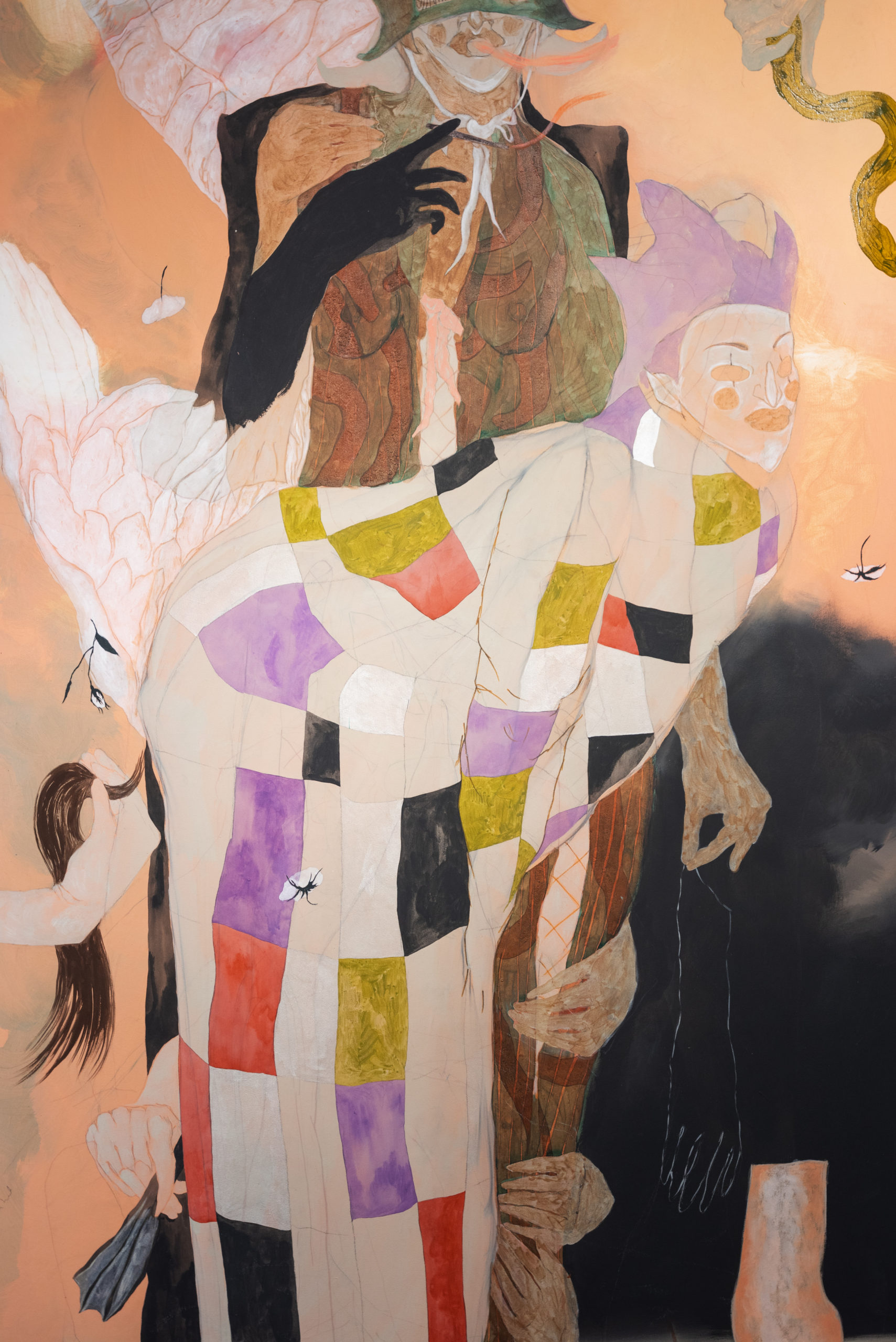When searching for artistic inspiration, British born Ella Walker often looks to the medieval world. Fascinated by Italian illuminated manuscripts and Renaissance paintings, Walker’s oeuvre explores love and tragedy on the stage, and the dialogue that arises between actors. Revising these medieval narratives, Walker chooses to include strong female characters in her pieces; a group so often neglected from the art historical canon. Female characters in medieval iconography were usually saints who were revered, or Eve who was despised. By introducing heroic female figures in her work, Walker gracefully inserts women into our understanding of medieval culture. Favouring rich narratives, complex iconography, and a vibrant palette, Walker firmly situates herself as a contemporary being within a medieval world.
Originating from the 17th century Italian troupe of players Comédie-Italienne, ‘Pierrot’ is distinguished for his foolish naïveté, a trusting clownish character who pines with unrequited love and nurses his broken heart. During the 19th and 20th centuries, his innocent, insular figure came to represent the alter-ego of the alienated artist. Indeed, Pierrot’s character slowly evolved into a macabre juxtaposition, where his pale face and mute demeanour suggested both innocence and the ‘pallor of the dead’.
So too, Ella Walker’s Pierrot is an image of binaries. While the character was historically understood as male, Walker renders Pierrot genderless, with a pair of Mason Margiela Tabi Boots to complete their getup. The mythical clown bends coquettishly in the foreground of the piece, while a sinister figure glowers in the shadows behind. The colourful pastel patchwork of Pierrot’s garment is contrasted with the muddier browns, greens, and black of the second figure; recognising the clear tensions held between good and evil. This figure appears to catch Pierrot unaware, ready to lure and snatch the clown into the cavernous black hole to their right.
The two figures are layered over one another in a manner that would be both physically and spatially impossible. Ghostly hands clamber over the darker figure’s legs, spilling into the cluttered space. Objects float around the picture plane in a flurried frenzy. A snake, a ponytail, and some dentures crowd the scene, transforming the painting into a dreamscape. The composition is overseen by the undulating black hole which threatens to suck the image away without a moment’s notice. As such, the painting is situated at the cusp of a dream, during the unquantifiable moment just before awakening.
Tantalisingly coloured, the flurry of mischievous activity appears to beckon the viewer onto the stage within the canvas. More so, the painting’s large scale (towering at 7 ft) and realistic perspective allows these life-size figures to intermingle with human life, breaking the boundaries between art and reality
(By Eleanor Lerman)
